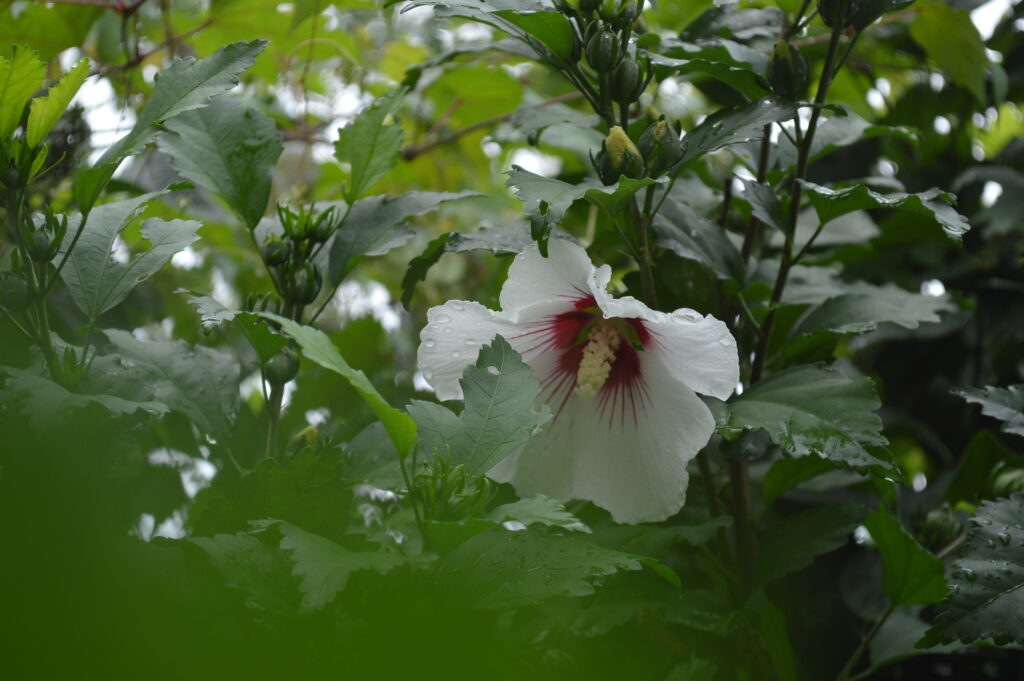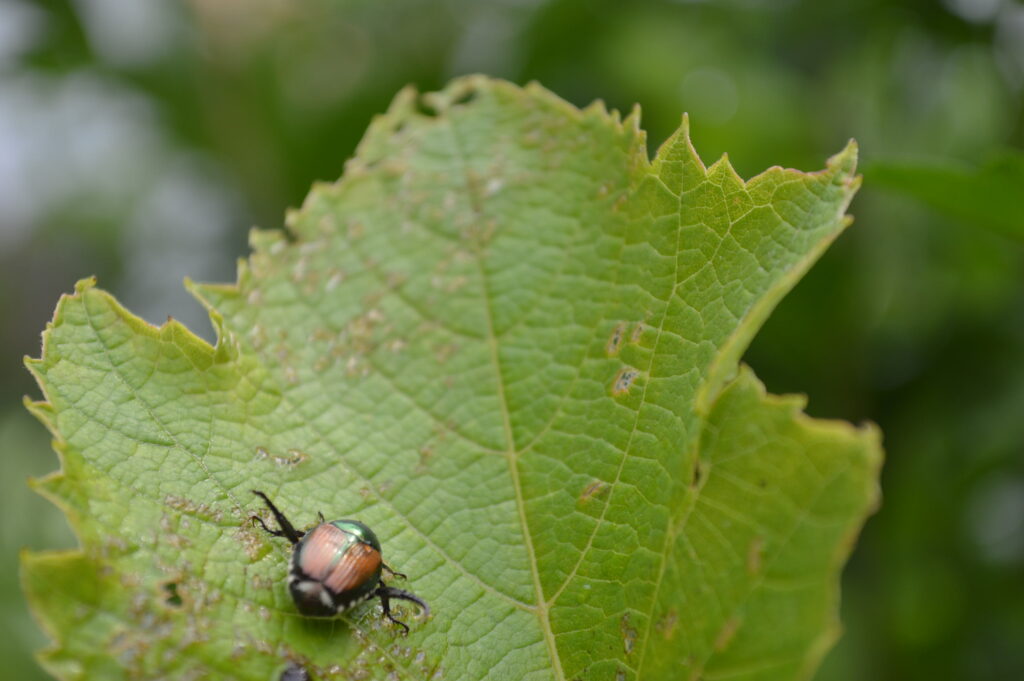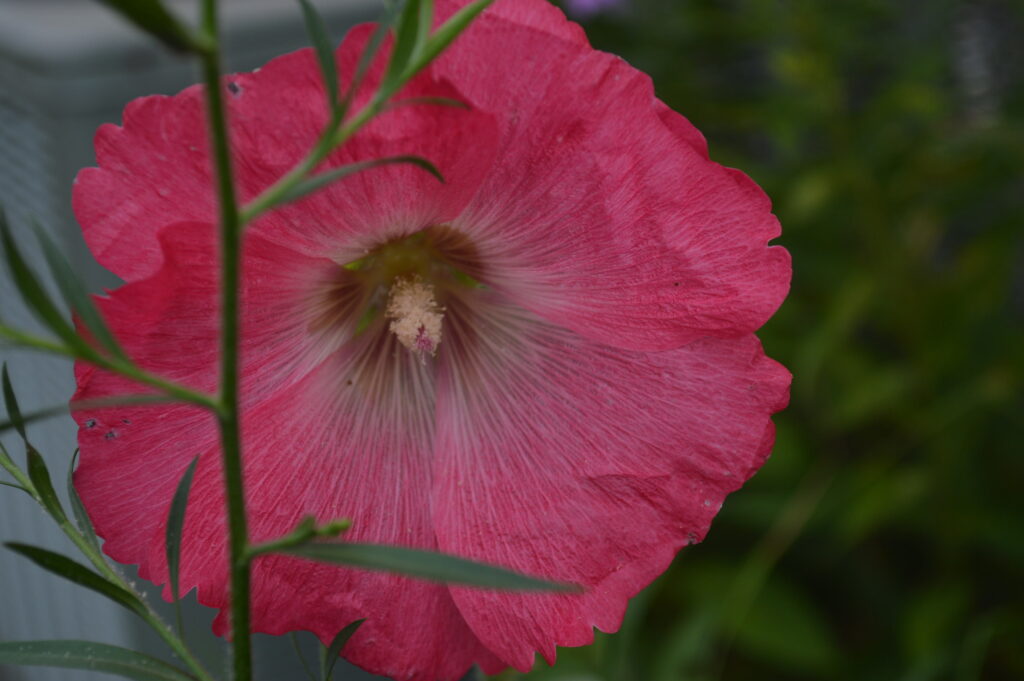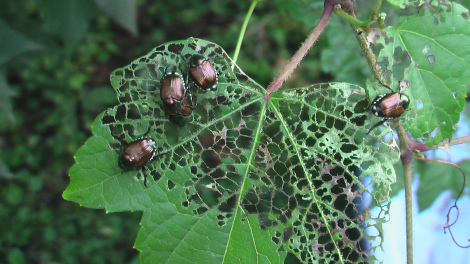
As usual, my first sighting of a Japanese beetle — on June 24 this year — coincided with the ripening of my raspberries, one of their favorite foods.
Iowa has coped with this voracious invasive species since it was first recorded in the state in 1994, but at least in my backyard, 2021 is proving to be an anomaly.
Rose of Sharon and other typical Japanese beetle targets look surprisingly pre-1994 this year.
In fact, in the past few weeks, I’ve only seen a handful of the copper-colored and metallic green pests.

I’m not complaining, but haven’t been able to find a reason why the population would drop so dramatically.
Experts say the more adult beetles that can be eliminated, the fewer grubs and beetles will return the following year.
Maybe Iowa’s Aug. 10, 2020, hurricane-strength derecho wiped out a number of the adult beetles, but I’ve seen no evidence to back up that theory.
Japanese beetles are known to devour hundreds of varieties of plants, turning leaves into skeletal “lace.”
If you’re coping with the typical annual invasion, rather than use synthetic chemicals to control the ravenous beetles, alternatives include knocking them into a bucket of soapy water — late afternoon is a prime time when the beetles are less active — and sprinkling self-rising flour on the plants you’d like to protect.
The self-rising flour is said to burst the beetles’ digestive tracts when ingested.
Chickens devour both the Japanese beetle grubs and those in the adult stage, offering another organic method of control.
More: Attack of the aphids
The beetles, easily identifiable by their copper-colored wings and metallic green head and body, consume more than 300 plants, such as linden trees, hollyhocks and grapes.

They leave behind skeletal foliage that looks like lace; another way to identify the foreign invaders.
Chemical means of attacking Japanese beetles can harm butterflies, bees and other beneficial insects. Although they might look aesthetically less appealing, most healthy trees should survive even the voracious appetite of Japanese beetles.
Pheromone traps that lure large numbers of Japanese beetles to their deaths are said to attract more to yards and experts generally advise against their use.
The grubs of Japanese beetles burrow underground during the winter and adult beetles generally tend to disappear in Iowa around the end of July to early August.
Learn about a beneficial beetle — the lightning bug — and what it eats.


I’ve saw almost no Japanese beetles this summer. They used to take out 50-75% of the leaves on our Linden tree. This year, they weren’t noticeable. Marion, Iowa
Whatever the reason behind it, that’s good news, Richard!